Tutsi People in Africa
Who are the Tutsi people in Africa? The Tutsi are a people who live in Rwanda, Burundi, and the northeastern part of the Democratic Republic of Congo.
They have much in common with the other groups of this region, the Twa and the Hutu. Their cultures are similar, and they all speak the same language.
In the past, the Tutsi were cattle herders. They were a minority of the population. However, most of the upper-class rulers were Tutsi.
A system of cattle trading helped keep peace among the different groups.
The wealthier people (often Tutsi) lent cattle to the poorer ones (often Hutu). In return they gained their labor, loyalty, and political support.
Social relations in Rwanda and Burundi were changed by European rule. The Germans held power from the 1890s until World War I (1914–18).
Then the Belgians ruled until 1962. For most of this period, the Europeans treated the Tutsi better than the Hutu.
In the 1950s, however, the Belgians urged the Hutu to challenge Tutsi power. In 1959 Hutu leaders overthrew the Tutsi monarchy in Rwanda. Many Tutsi fled to nearby countries.
In Burundi, the change to independence was more peaceful. The mwami (the Tutsi king) helped the Tutsi and Hutu sides reach an agreement. However, the peace did not last. The Hutu tried to gain power by force, and they were defeated.
When the colonial period ended, opposite sides controlled Rwanda and Burundi. The Hutu held power in Rwanda until 1994. The Tutsi still rule Burundi.
Hutu power in Rwanda ended in 1994 when Tutsi rebels overthrew the government. However, this Tutsi victory occurred at a great cost in human lives. As many as one million people were killed.
LOCATION OF THE TUTSI PEOPLE
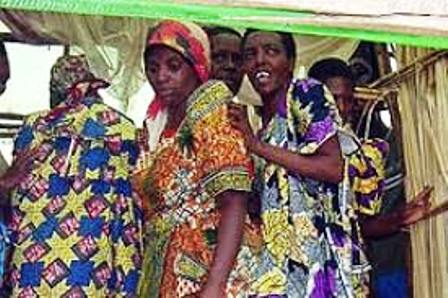 LOCATION OF THE TUTSI PEOPLE
LOCATION OF THE TUTSI PEOPLERwanda and Burundi are mountainous countries in east-central Africa. Their combined total area is about 20,900 square miles (54,100 square kilometers). This is about the combined size of the states of Maryland and New Jersey.
Tutsi also live in the northeastern part of the Democratic Republic of the Congo (formerly Zaire). They live near the city of Bukavu in the Mulenge region. Here they are known as the Banyamulenge.
The combined population of Rwanda and Burundi was about 13 million in 1994. However, many refugees fled Rwanda that year. In addition, many Rwandese Tutsi returned from Uganda after the Hutu army was defeated in 1994.
LANGUAGE OF THE TUTSI PEOPLE
The Hutu, Tutsi, and Twa all speak a Central Bantu language. It is called Kinyarwanda in Rwanda, and Kirundi in Burundi. Both are dialects of the same language.
Like other Bantu languages, both use nouns with prefixes. For example, the word Banyamulenge ("Ba-nya-mulenge") can be divided into parts. The prefix "banya" means "people"; "Mulenge" is the name of a region. The whole word means "people of Mulenge."
Many Rwandese and Burundians speak French, the language of their former Belgian rulers. French is used in school. Also, many people in both countries have French first names. Tutsi who have been refugees in Uganda may also speak English.
Personal names may be based on events, poetry, or beliefs. The name Ndagijimana means "God is my herder." Hakizumwami means "only the king can save." Muvunanyambo means "the defender of noble cows."
FOLKLORE OF THE TUTSI PEOPLE
Tutsi folklore includes poetry, proverbs, folk tales, riddles, and myths. Some Tutsis used to know the names of their ancestors at least six generations back. Many believed they were descended from a mythical king named Gihanga.
One popular folk tale tells the story of Sebgugugu. He was a poor man who was helped by God. God performed miracles to provide food for him and his family. However, each time Sebgugugu wanted more. Through his greed, Sebgugugu lost everything in the end.
RELIGION OF THE TUTSI PEOPLE
Today most people in Rwanda and Burundi are Christians. However, some traditional beliefs survive. These include the belief in a distant creator called Imaana.
This god has the power to grant wealth and fertility. The king shares in this power. It can be seen in his sacred fire, royal drums, and rituals. Spirits of dead relatives, called abazima , carry messages between Imaana and the human world.
However, the abazima may bring bad luck to those who do not respect them. People offer gifts to protect themselves from the abazima. They also try to learn the spirits' wishes by seeing fortune-tellers.
MAJOR HOLIDAYS OF THE TUTSI PEOPLE
National holidays include Independence Day, May Day, New Year's Day, and the major Christian holidays. The Tutsis' traditional holidays were celebrated with dancing and sacred drumming. These holidays are no longer observed.
RITES OF PASSAGE OF THE TUTSI PEOPLE
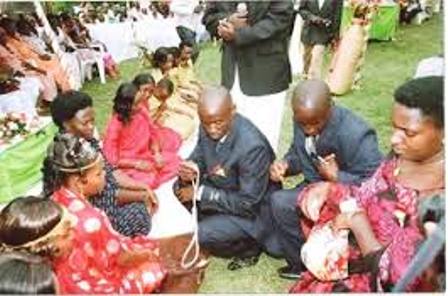 RITES OF PASSAGE OF THE TUTSI PEOPLE
RITES OF PASSAGE OF THE TUTSI PEOPLEHutu and Tutsi rites of passage are very similar. The first one, the naming ceremony, takes place seven days after a child's birth.
Marriage is made legal by payment of the bride wealth. It is paid by the groom's family to the bride's family because they are losing her labor. There is no ritual other than marriage to mark the beginning of adulthood.
Death is marked by prayers, speeches, and limits on many activities. Close family members are supposed to avoid physical labor and sex after a death. When the mourning period ends, the family holds a ritual feast.
RELATIONSHIPS OF THE TUTSI PEOPLE
Social status is very important in both Rwanda and Burundi. Signs of status include a person's posture, body movements, and way of speaking. Upper-class people are supposed to act with dignity and not show their emotions.
The Tutsi have different greetings for morning, afternoon, and evening.
In the past, most people had arranged marriages to someone of the same social class. Today, Tutsi may choose the person they will marry. Group activities are more common than dating in couples. However, some young Tutsis in the cities practice Western-style dating and go out to nightclubs.
LIVING CONDITIONS OF THE TUTSI PEOPLE
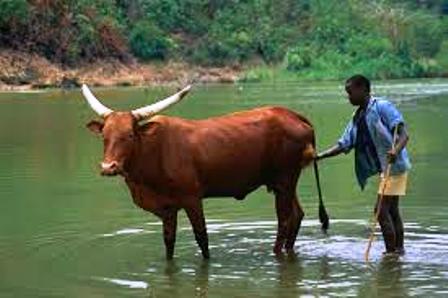 LIVING CONDITIONS OF THE TUTSI PEOPLE
LIVING CONDITIONS OF THE TUTSI PEOPLETraditional Tutsi houses were huts of wood, reeds, and straw shaped like beehives. Around them were high hedges that served as fences. Modern Tutsi build rectangular houses with Western-style building materials. These houses have corrugated iron or tile roofs.
FAMILY LIFE OF THE TUTSI PEOPLE
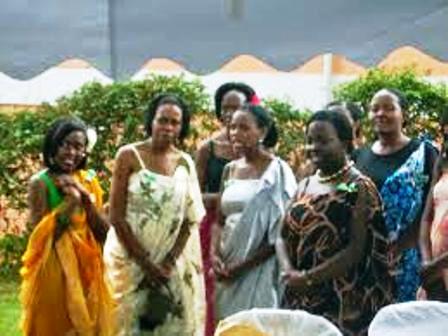 FAMILY LIFE OF THE TUTSI PEOPLE
FAMILY LIFE OF THE TUTSI PEOPLETutsi and Hutu families are patrilineal (the family name is passed on by males).
In the past, marriage in Rwanda and Burundi was based on the relations between the two families. Today most Tutsis choose the person they will marry.
CLOTHING OF THE TUTSI PEOPLE
In the past, Tutsi men and women wore robes brought in from the African coast. A woman's costume included a white robe and white headbands. Today Western-style clothing is usually worn. Women wear dresses and scarves made from the printed cloth popular in East Africa. Men wear pants and shirts.
FOOD OF THE TUTSI PEOPLE
Milk, butter, and meat are the most highly valued foods. However, people will only kill a cow on a special occasion. Goat meat and goat milk are also eaten. However, they are eaten secretly because it is against Tutsi customs. Tutsi in rural areas consume milk products, bananas, and sorghum beer. Meals are arranged around work schedules.
Alcoholic beverages are made from bananas and sorghum. People drink them on special occasions.
EDUCATION OF THE TUTSI PEOPLE
 EDUCATION OF THE TUTSI PEOPLE
EDUCATION OF THE TUTSI PEOPLENo more than half of Tutsi in Rwanda and Burundi can read and write their native language. A smaller number can read and write French. There are teacher training schools in Burundi. Both Rwanda and Burundi have at least one university.
CULTURAL HERITAGE
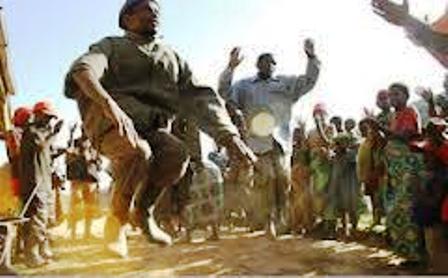 CULTURAL HERITAGE
CULTURAL HERITAGERoyal dancing and drumming groups performed for the kings of Rwanda and Burundi. For rituals, two dozen tall drums were placed around a central drum. The drummers moved around the drums in a circle. Each one took a turn beating the central drum. This style of drumming is still practiced, and it has been recorded.
Singing, dancing, and drumming are important in rural life. People compose many kinds of songs—hunting songs, lullabies, and ibicuba (songs praising cattle).
EMPLOYMENT OF THE TUTSI PEOPLE
Cattle herding has always carried a higher status among the Tutsi than farming. In the past there was a special class of herders, called abashumba , who took care of the king's prize cattle ( inyambo ).
SPORTS OF THE TUTSI PEOPLE
The main spectator sport in Rwanda and Burundi is soccer.
A game called igisoro is popular with children and adults. It is played on a wooden board with holes for beads or stones. Players line up their pieces in rows and capture as many of their opponents' pieces as they can. In other parts of Africa the game is known as mancala.
RECREATION OF THE TUTSI PEOPLE
Movie theaters in the capitals of Rwanda and Burundi show current European and American films.
CRAFTS AND HOBBIES OF THE TUTSI PEOPLE
Traditional crafts of Rwanda and Burundi include basket weaving, pottery, woodworking, metal working, and jewelry making.
SOCIAL PROBLEMS OF THE TUTSI PEOPLE
Since the early 1960s, the peoples of Rwanda and Burundi have lived through some of the worst violence in African history. The killings are usually called ethnic warfare between the Hutu and Tutsi. However, victims have often been killed for their political beliefs, not just their ethnic group.
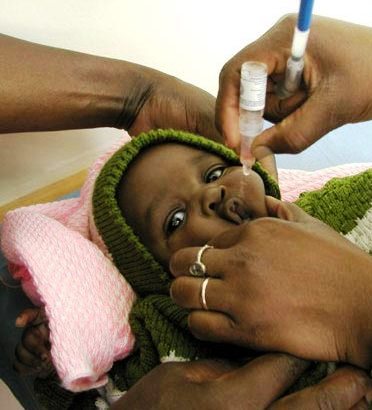 SOCIAL PROBLEMS OF THE TUTSI PEOPLE
SOCIAL PROBLEMS OF THE TUTSI PEOPLEMore about Afican Culture
Kenya Culture |
Akamba |
British Colonialists |
Crafts |
Cultural Business Meetings |
Cultural Communication |
Cultural Eye Contact |
Cultural Gestures |
Gift Giving |
Cultural Law |
Cultural Music |
Cultural Space |
Cultural Time |
How to Talk in Kenya |
Recent Articles
-
Garam Masala Appetizers ,How to Make Garam Masala,Kenya Cuisines
Sep 21, 14 03:38 PM
Garam Masala Appetizers are originally Indian food but of recent, many Kenyans use it. Therefore, on this site, we will guide you on how to make it easily. -
The Details of the Baruuli-Banyara People and their Culture in Uganda
Sep 03, 14 12:32 AM
The Baruuli-Banyala are a people of Central Uganda who generally live near the Nile River-Lake Kyoga basin. -
Guide to Nubi People and their Culture in Kenya and Uganda
Sep 03, 14 12:24 AM
The Nubians consist of seven non-Arab Muslim tribes which originated in the Nubia region, an area between Aswan in southern

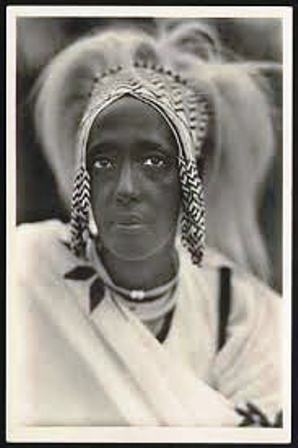
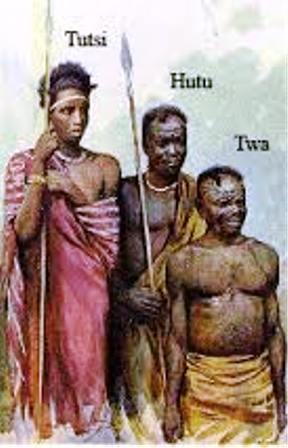
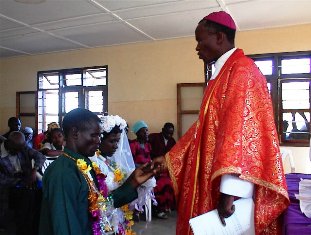
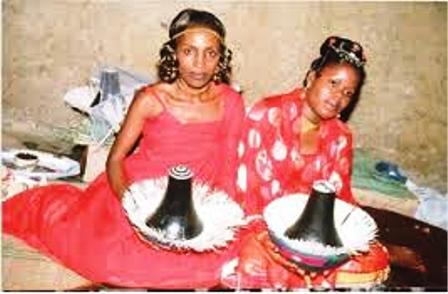
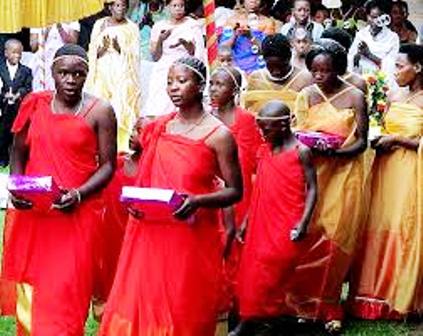
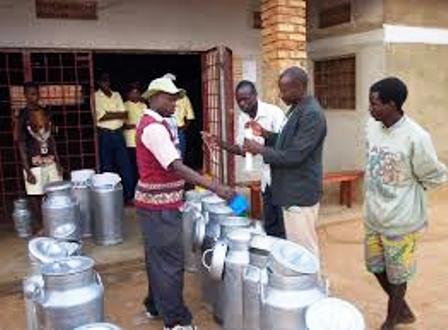
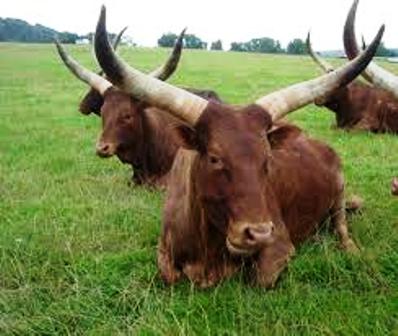
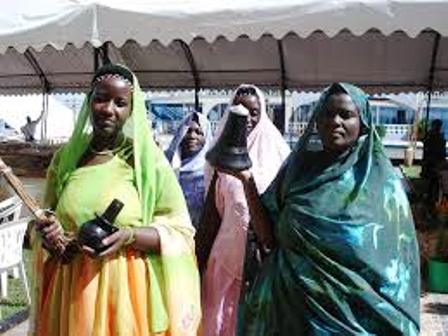
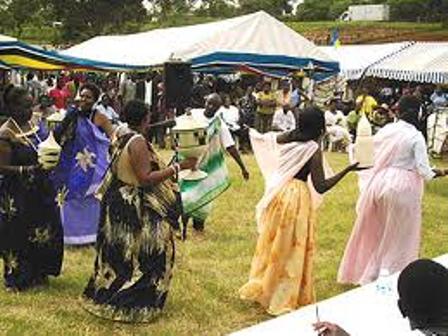







New! Comments
Have your say about what you just read! Leave me a comment in the box below.